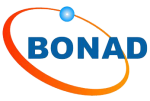Introduction:
In our globally connected economy, the creation and implementation of standards are vital for maintaining compatibility, quality, and safety across various sectors. Two key organizations in this field are ISO (International Organization for Standardization) and EN (European Committee for Standardization), both of which provide essential guidelines and specifications for industries worldwide. This article aims to clarify the primary differences between ISO and EN by examining their scopes, development processes, and impacts on businesses and consumers.
Understanding ISO:
The International Organization for Standardization (ISO) is an independent, non-governmental entity established in 1947 that formulates and publishes international standards. Covering a broad spectrum of sectors such as technology, manufacturing, agriculture, healthcare, and services, ISO standards are crafted through the collective expertise of professionals from numerous countries to ensure global relevance.
Key Features of ISO Standards:
- Global Reach: ISO standards are recognized internationally, offering a unified framework for organizations to enhance their products, services, and processes on a global level.
- Consensus-Driven Development: The creation of ISO standards involves a thorough consensus-based procedure where representatives from national standards bodies and relevant stakeholders collaborate to define requirements and best practices.
- Voluntary Implementation: Organizations can choose to adopt ISO standards voluntarily as a way to demonstrate compliance, boost customer satisfaction, and improve market competitiveness.
Understanding EN:
EN (European Norm) represents a set of standards developed by the European Committee for Standardization (CEN), which was established in 1961. CEN is a voluntary association focused on fostering economic and social benefits within Europe through harmonized standards. EN standards primarily address industries within the European Economic Area (EEA), promoting trade, safety, and compatibility among member states.
Key Features of EN Standards:
- Regional Emphasis: EN standards are mainly adopted within the EEA to facilitate the free movement of goods, services, and professionals within the European market.
- Harmonization Efforts: These standards aim to harmonize requirements among member states to ensure that products, services, and processes meet common criteria, thereby enhancing safety and interoperability.
- Relationship with ISO: Often derived from international (ISO) or other European versions of standards, EN standards may include additional requirements tailored specifically to European needs.
Comparing ISO and EN:
- Scope: While ISO standards have a global focus covering diverse industries and activities, EN standards concentrate on sectors within the EEA to promote harmonization and compatibility in the European market.
- Development Processes: ISO standards are formulated through a global consensus-based approach involving multiple countries’ stakeholders. In contrast, EN standards are developed within CEN with input from member state representatives.
- Adoption and Regulation: Organizations can choose whether to implement ISO standards voluntarily. However, EN standards can be adopted as European Norms or integrated into European legislation, making compliance mandatory within the EEA.
- Market Relevance: ISO standards enjoy worldwide recognition facilitating market access across various regions including Europe. On the other hand, EN standards are specifically designed to meet European market requirements ensuring compliance within the EEA.
Conclusion:
Both ISO and EN play crucial roles in standardization but serve distinct purposes tailored to different markets’ needs. While ISO provides globally recognized guidelines with voluntary adoption enabling organizations to improve offerings worldwide, EN focuses on harmonizing requirements within Europe enhancing trade safety among member states. Businesses must consider their target markets’ regulatory frameworks carefully when deciding between adopting ISO or EN standards ultimately striving for excellence compliance market competitiveness.


